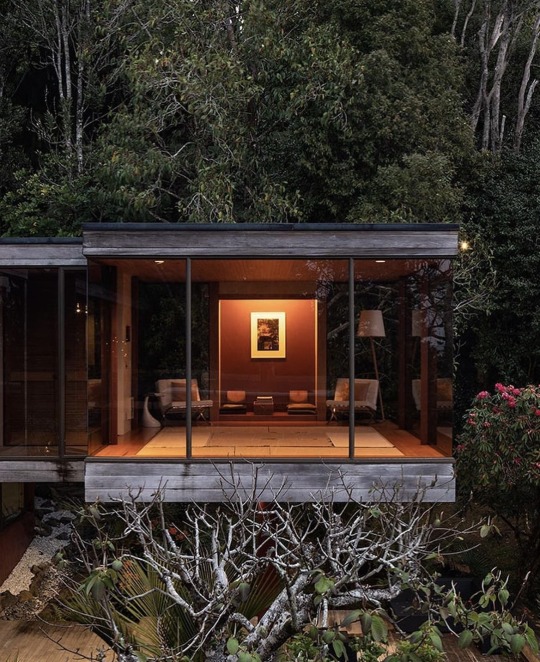#Brian Brake
Text



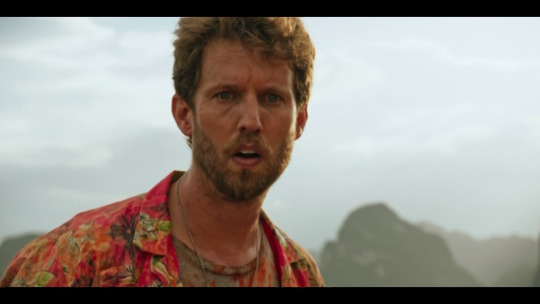
youtube
Tremors: Shrieker Island (2020)
My rating: 5/10
This does not compare favorably to the other Tremors movies I've seen, and there are some bits - whether due to bad direction/editing, budget constraints or 'rona reasons - where it feels like none of the characters and events are in the same place, but as cheap creature features go, I've definitely seen far worse.
#Tremors: Shrieker Island#Don Michael Paul#Brian Brightly#S.S. Wilson#Michael Gross#Jon Heder#Richard Brake#Youtube
5 notes
·
View notes
Note
Hey. Little guy. Hey.
[Death appears behind brien, standing at about 10 feet. its spider legs are tucked close behind it as it fidgets]
...Heard you had some zebra cakes... May I have one, please?
OH SHIT---!!??!?!!
#(DEATH PROCEEDS TO KILL ALL 3 OF THEM AS BRIAN SWERVES OFF THE ROAD /J /HEAVYJ)#(nah in reality he just hits the brakes really hard)
27 notes
·
View notes
Text
HAPPY AUTISM AWARENESS/ACCEPTANCE♾️🌈
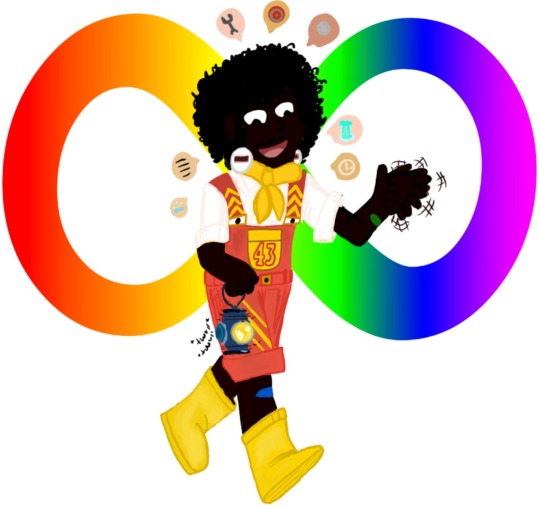
Please look at Bruno,
i love,adore,care for him he’s has my heart and soul ❤️♥️💛
#ttte#bruno the brake car#bruno thomas and friends#ttte bruno#ttte humanized#humanization#my art owo#my art style#my art#my art crap#my artwrok#my art lmao#my art stuff#my art lol#i based my Bruno look way too much on Antonio and Ezra I love them alright#Yeah this was based on that one Bruno sketch I posted some time ago#Was gotta draw Brian but I forgot#Was also gotta draw Kyle and duck but I don’t have a duck design yet same with some ocs#Maybe later on cause I draw Kyle a lot I have something for a late trans day of visibility#Bruno canonically loves people esp mechanics and I reread Jasperpie comic on him he likes lakes cause it’s calm and soothing#So imma hc he likes bodies of water like the beach rivers creeks streams etc cause it’s very relaxing
7 notes
·
View notes
Text

Ancient Egyptian Hieroglyphs, 1968
White Chapel of Senusret I, Karnak Open Air Museum
Photo: Brian Brake
719 notes
·
View notes
Text
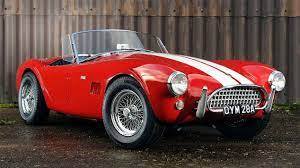
1963 AC SHELBY COBRA
1963 AC SHELBY COBRA 4.7-LITRE MARK II ROADSTER
REGISTRATION NO. OYM 28A
CHASSIS NO. CSK2116
ENGINE NO. CSX2116
Footnotes
Rightly regarded as one of the all-time great classic sports cars, the muscular, fire-breathing Cobra succeeded in capturing the hearts of enthusiasts like few of its contemporaries. Only 1,000-or-so Cobras of all types were built between 1962 and 1967, but such was the model's enduring popularity that production was resumed in 1982 under the auspices of Brooklands-based Autokraft.
Convinced that a market existed for an inexpensive sports car combining European chassis engineering and American V8 power, Le Mans-winning Texan racing driver Carroll Shelby concocted an unlikely alliance between AC Cars and the Ford Motor Company. The former's Ace provided the simple twin-tube chassis frame - designed by John Tojeiro - into which was persuaded one of Ford's lightweight, small-block V8s. It was discovered that the latter was lighter than the six-cylinder Ford Zephyr unit that AC was using, yet with vastly greater potential. To cope with the projected power increase, the Ace chassis was strengthened with heavier gauge tubing and supplied fitted with four-wheel disc brakes. Weighing a mere 1.5cwt more than a Bristol-engined Ace yet endowed with double the power and torque, the Cobra turned in a breathtaking performance, racing to 60mph in 4.4 seconds and reaching the 'ton' in under 12, exceptional figures by early 1960s standards and none too shabby even today.
The 260ci (4.2-litre) prototype first ran in January 1962, with production commencing later that year. Exclusively for the USA initially, Cobras - minus engines - were sent from England to be finished off by Shelby in California, and it was not until late in 1963 that AC Cars in Thames Ditton got around to building the first fully finished cars to European specification.
After 75 Cobras had been built with the 260ci engine, the more powerful 289ci (4.7-litre) unit was standardised in 1963. Rack-and-pinion steering was the major MkII up-date; then in 1965 a new, stronger, coil-suspended MkIII chassis was introduced to accommodate Ford's 427ci (7.0-litre) V8, an engine that in race trim was capable of producing well in excess of 400bhp. Wider bodywork, extended wheelarch flares and a bigger radiator intake combined to create the definitive - and much copied - Cobra MkIII look. Keeping ahead of the competition on the racetrack had been the spur behind Shelby's adoption of the 427 engine, but some MkIIIs to 'street' specification came with Ford's less powerful 428ci hydraulic-lifter V8.
But for Brian Angliss, the Cobra story would have ended in 1967. The Autokraft boss had built up a business restoring Cobras and supplying parts, and in the early 1980s acquired the rights to the AC name plus a quantity of jigs and tooling from the old Thames Ditton factory. Keeping the overall style of the MkIII, Autokraft produced the MkIV, which was appropriately updated to meet current legislation and powered by a 'Federalised' Ford 5.0-litre V8 engine. Around 480 were built.
Chassis number 'CSX2116' was invoiced to Shelby American on 16th April 1963 and shipped to Los Angeles three days later aboard the 'SS Loch Gowan'. Invoiced on 18th June 1963 to Burton Motors of Sacramento, California, the Cobra was sold new to a local doctor who used it for a few years before giving it to his daughter. She used the car as daily transport for several years before the clutch failed, at which time it was sold to Steve Dangremond of Santa Rosa, California. The Cobra was advertised for sale by Mr Dangremond in late 1977 and bought by Dr Grant Hill of Chotoka, Alberta. Dr Hill fitted Weber carburettors and raced 'CSX2116', eventually trading it to Fred Yule in Portland, Oregon. At that time, the car was still finished in its original colour scheme of dark blue and retained its original black leather interior.
'CSX2116' returned to the UK in the late 1980s and was advertised through Hampson's Ltd, by which time it had been refinished in red and fitted with a full-width roll bar. Subsequent owners in England were Dr Carlos Barbot, Trojan boss Peter Agg and Formula 1 racing driver Rupert Keegan. 'CSX2116' was last restored in 1988, records on file indicating that an extensive mechanical restoration was undertaken at this time. The car still retains its original black leather interior though the Weber carburettors have gone, replaced by an easier to maintain four-barrel Holley. There is considerable additional accompanying documentation including correspondence between previous owners, a copy of the original bill of sale, Shelby American Automobile Club letter of authentication, FIA papers and Swansea V5 registration document. The car has belonged to the current owner since 2006.
Early Cobras are offered for sale only rarely and this example represents a wonderful opportunity to acquire a fine example of this classic of Anglo-American sports car design.
89 notes
·
View notes
Text
Tej Parker x Reader
Warnings: bad writing, sad/comfort. First time doing a sad/comfort so be nice please.

“Why?" Tej asked trying to stay calm, but he was getting more aggravate. I was trying not to start a fight. Really I was. He stood blocking me from leaving.
"Because I need to get away." I said keeping an even voice. He looked hurt. He should. He needs to feel what I have been feeling. "From me? Why?" His voice cracked. "You haven't been honest with me. You are hiding something from me and I don't trust you completely really now." I said in a whisper. It hurt to say, but it was true. He was spending hours with his ex, to the point he was coming home at 5am.
"I can explain everything baby." His voice killed me. It was sad and broken. As if I had hit him. I wanted to die. I shook my head no. Too scared I would stay and break down.
"It's not want it looks like. Please!" He was about to cry. "No. Not right now. I can't." I said as he moved out of the way for me to walk out.
"I'm so sorry honey." Mia said cuddling into my side. "It's okay. I'll be okay." There was a knock on the bedroom door. "Come in." Mia said before Brian popped in with ice cream in hand. He gently kisses my head. "If you want I can shoot him, or have him shoot. I still have cop friends." He said laughing lightly, I couldn't bring myself to laugh but I said a no but thank you with a small smile.
After a while Mia left. I finally felt like I could cry.
It felt as if someone riped out my heart. I though we would be together until death and even then we would still be together. I thought he was it. The one.
I hugged the stupid stuffed bear he gave me. No, it wasn't making me feel better, I can't sleep without him. I felt safe with him. I pull my knees to my chest trying to get some sleep.

The next day.
I woke up to the sun peaky through the curtain. Rubbing my eyes I grabbed my phone to see the time. 12am, great lunch time. I saw I had five texted for Tej
Tej❤️ I'm sorry love it's not what it seems.
Tej❤️ I promise. I see how it can look like I'm cheating but I'm not.
Tej❤️ please just let me explain.
Tej❤️ I would never hurt you. I would die before please believe me.
Tej❤️ please just come meet me at our spot at 4. It will explain everything.
Our spot was a roof of an abandonment build. Maybe I should go. Should I go? What if it doesn't fix anything but brakes us more.
Before I could completely overthink going I got up off the bed and took a shower.
After I went down stairs to see Mia. She gave me a sad smile as she asked if I wanted coffee. I took it before telling her about Tej texting asking me to go at 4. She said I should and I agree with her. I should.
At 3pm I started to get dressed in a pair of shorts and a shirt that once belonged to Tej. At 3:20 I decided to head out after saying a quick goodbye. It only took 20 minutes to get there.
I started to climb up the four story building. It didn't take long to get to the top. That's when I saw it.
Tej stood at the table we had brought up for us, he was placing roses everywhere. He continued to place things on the table before I could tell him I was there he turned around.
He smiled at me, before walking towards me. "Please just let me explain, if you still want to break up I'll be okay. Just please let me explain." He said in a rush. I used to love it when he did that, but now It just made me want to hug him and tell him it's okay.
He took my silence as an answer then he started to explain. "I was not cheating. I know what it looks like but she was just helping me pick out your ring. I wanted to get the perfect ring and I didn't tell you I wanted it to be a surprise and I had it custom made for you, so please believe me." He said it so fast I almost didn't hear him. I hugged him before kissing him.
"I'm so sorry. I'm sorry I thought that." I said hugging him tighter he gently pulled back before talking. "It's okay. I understand, I didn't realize how bad it looked until it was too late. I would have thought that too." I said getting on one knee. "Now will you please marry me?" I got down to his level before kissing him. "Of course! I love you so much!!"
#fast x#fast and furious headcanons#fast and furious x reader#fast and the furious#fast x reader#fast and furious#tej parker x reader#tej parker
103 notes
·
View notes
Text
John: what is scarier than a bridge without fences?
Paul: a car without brakes.
George: a country without rules.
Brian: a band without a manager.
Ringo: George without biscuits.
#the beatles#beatles#paul mccartney#john lennon#george harrison#ringo starr#brian epstein#incorrect quotes#starrison
48 notes
·
View notes
Text
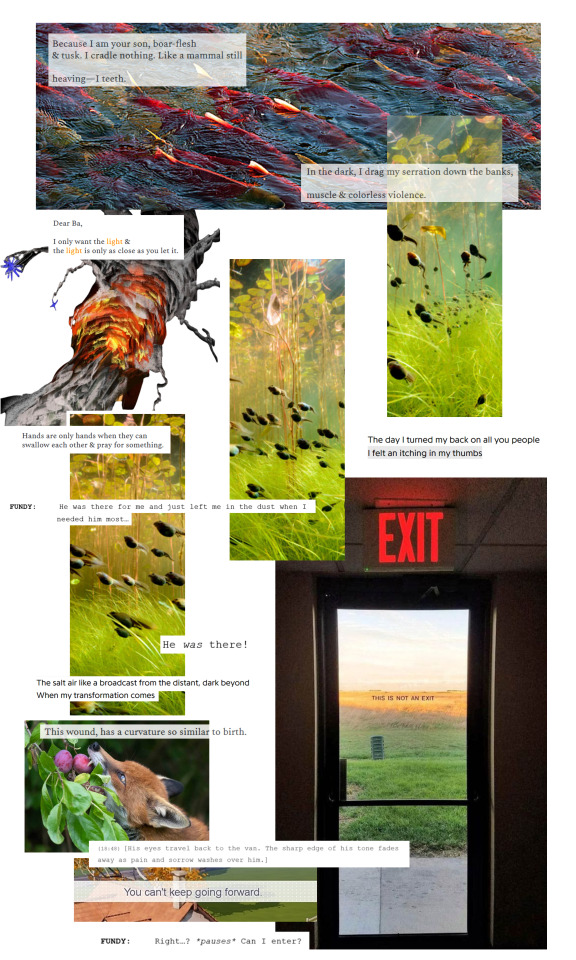




CUT ME DOWN WHERE THE WATER MEETS THE SEA
A c!Fundy webweave
Headwaters - Daniel Liu // Salmon Migration. Canada - Alex Mustard // Nostalgia - Eiko Jones // In Corolla - The Mountain Goats // 福建, 1979 / Fujian, 1979 - Daniel Liu // four explosion studies - shevvys-pictures // BEING ADOPTED - Fundy, trans. dsmptranscripts // a red fox snacking on a plum - Frederic Desmette // Fundy’s Mind - Fundy, trans. dsmptranscripts // screenshots of despair // THIS IS NOT AN EXIT - weirdness-is-good // Telemachus - Ocean Vuong // harvest - solarphoto // screenshots of despair // Tokyo fish market, 1964 - Brian Brake // To the Bay - mostlythemarsh // Group of Sockeye Salmon - Alex Mustard // screenshotsofdespair // Self-Immolation - Daniel Liu // Field Guide to Rabbit Hunting - Daniel Liu // Testing of a new refractory building material. New Haven, 1949 // The Fox and the Grapes - Wikipedia // Fundy’s Mind - Fundy // screenshots of despair // bugsandcritters // Red wolf - Ronald M. Nowak
Exchange gift for @livingpastlivesiswhoiam for @mcytblrholidayexchange!
(The Daniel Liu poems in this webweave come from his chapbook COMRADE. It's a really good chapbook. Definitely worth checking out.)
#my art#yens#c!fundy#web weaving#COMRADE is like. three dollars. i like it so much#ur gonna have 2 zoom in on this one probably. sorry#maybe my eyes are just bad#mcytblrholidayexchange2023
75 notes
·
View notes
Text
Sam Leach and Joan McEvoy's Engagement Party, 17th March 1962 🕺💃
Earlier in the evening, The Beatles performed at the Village Hall in Knotty Ash, Liverpool. The evening was billed as a "St. Patrick's Night Rock Gala". Sam Leach, (Liverpool concert booker) booked The Beatles and Rory Storm and The Hurricanes to draw a big crowd so that he could make enough profits to pay for his engagement party, scheduled to follow the night's show. Both bands attended Leach's party, which didn't end until the following afternoon. Also present at the party was Mike McCartney, Paul's girlfriend Dorothy 'Dot' Rhone, Brian Epstein, Bob Wooler and Ted 'Kingsize' Taylor.
In his book Sam Leach has a distinct memory of 'a gang of us' (presumably including Beatles and Hurricanes) travelling to the party from Knotty Ash in a van. Their driver (not Neil Aspinall) pulled out from the Village Hall into the path of a speeding articulated lorry which seemed to have appeared from nowhere. Everyone braced themselves for the inevitable impact but miraculously the lorry, its brakes screeching hysterically, managed to stop less than a foot from the side of the van. Shocked, stunned, shaken and stirred, everyone in the van travelled the 1.5 miles to the party in complete silence.
Hurricane Johnny 'Guitar' Byrne diary entry for 1962 mentions the party:
"Bought Zodiac. Knotty Ash, Orrell, then Sam Leach's engagement party. Had row with Eileen. Got home 6."
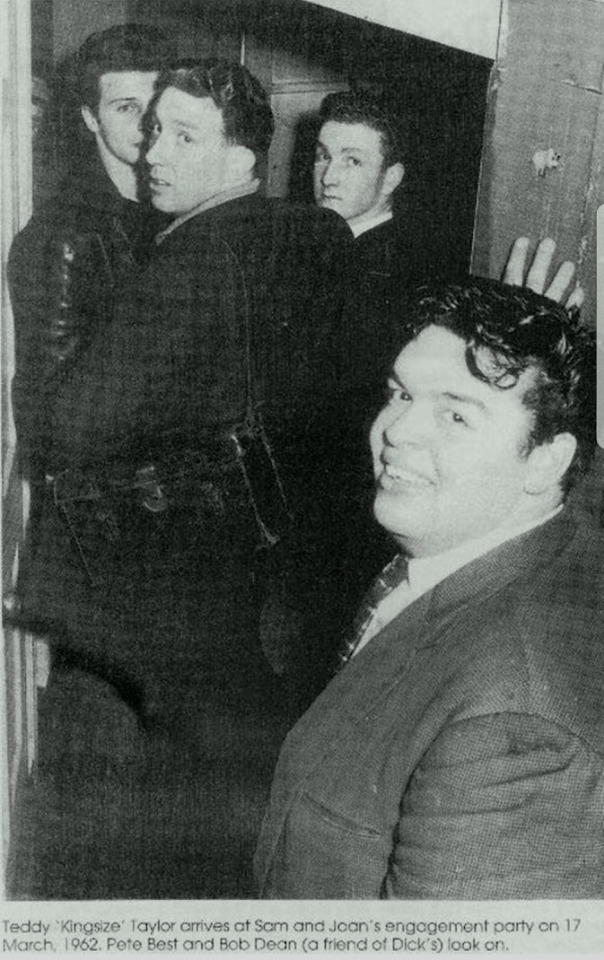
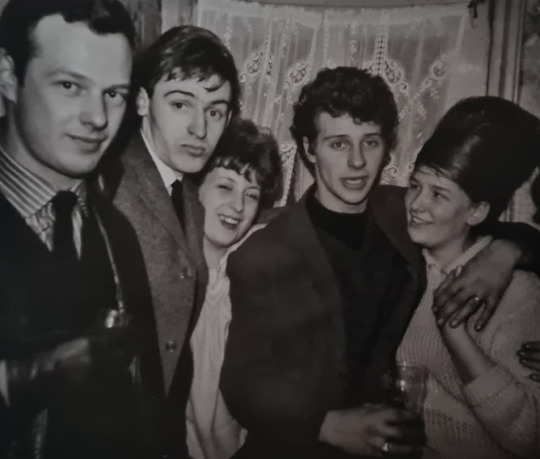
The party was at the family house in Huyton, thrown by Dolly, mother of Vera and Joan McEvoy.
"I can vouch for the fact that Brian fell in love with Vera and pursued her all night. In fact after the party he wrote more than one letter to Dolly asking her could she help him fix a date with Vera. Unfortunately for Brian she wasn't interested." Sam Leach (She seemed a little interested, as displayed below)
"Brown, who was married (but separated) at the time of her liaison with Epstein in 1962, describes him as "...very emotional. He always gave the impression of being cold and icy, but he was very softhearted, very tender, very gentle, and he had a lot of feelings. And he was all man, I don't care what they say." (Ray Coleman, The Man Who Made The Beatles)
"We’d been to the Knotty Ash Club for my sister’s engagement. The Beatles had played there, as did Rory [Storm] and a few other groups. Afterwards, as usual, we all went back to the house and Brian came along.
If you saw the Beatles in my mother’s they were just a scruffy bunch of boys. And who’d look at them? I wouldn’t bother with them but then Brian stood out and Brian looked like the real thing. He was handsome. He was tall. He was immaculate. That’s why I let Brian get behind the bar with me and help me serve the drinks. He was the best of the bunch.
So we were just behind the bar when Elvis came on, 'Heartbreak Hotel’. He loved it, I loved it, and we started dancing. There wasn’t much room. You know, you could go two steps forward, three steps back and that was it. So we sort of got a bit close and everyone was laughing at us, saying, like, 'What’s going on?’ But if you moved sideways you fell over the crates. There were crates of beer in there and everybody’s coats. We ended up on top of the coats or on top of the crates if we just moved the wrong way. And we got pretty close but I wasn’t surprised by the way he was acting towards me.
We were dancing and kissing at the same time. He was probably one of the sexiest fellas I had ever met. People say, 'Oh well, Brian was gay.’ but he wasn’t very gay with me. He was just like any other man and more. He was very easy-going and casual and funny. He’d make you laugh and he could dance. You know he could move. He said to me, 'I’ve seen you in different places and I thought you were stuck up.’ And I said, 'Well, I thought you were stuck up because I remember being in your shop and you were like the big boss.’
I think he was pretty fresh. In a house where people are looking at you it’s not like a club with all the lights out and people tend to be aware of others but Brian wasn’t that bothered. He was interested and he showed it. Maybe he’d had a bit too much to drink. I don’t know. But I can’t say that because I met Brian afterwards and he was still interested.
The next day he called round to the house. I wasn’t there so he talked to my mother about poetry. I don’t know how they got talking about poems but Brian came the following day with a book of poems for my mother with a little letter. He also gave her a letter thanking her for having the party because everyone had made such a terrible mess of the house. It was full of eggs and rubbish and bottles everywhere and he apologized for the actions of everybody else at the party.
Well, my mother just thought he was the most wonderful person in the world. At last a gentleman has come through this door and not Teddy boys and hooligans and all the rest of it. In the first letter he said he’d enjoyed meeting her, loved coming to the house, felt so welcome and would she mind if he came around again to see me. I said to my mum, 'Well, that’s impossible. How can I see him? You know I can’t go out with Brian.’ She said, 'You will have to’.
My mother was in love with Brian: 'He’s beautiful. He’s wonderful.’ So she sort of arranged it. I didn’t want him to come and pick me up at the house because I didn’t want people to see us going out. I arranged to meet him in a little cafe in Bold Street. We had a coffee and a chat and then I can’t really remember where we went. We went somewhere for a drink around Bold Street where there were all these little dives at the time. But I had to be back for nine o'clock. Another time I met him in the Tower and we had a little chat. We met in the back office and had a talk.
I liked Brian as a man and I think Brian liked me. But then he suggested if we were to go out we’d have to go to Southport or Manchester - anywhere out of Liverpool because he didn’t want to walk into my husband in Liverpool. We were separated at the time but it was a little bit awkward, you know.
It’s hard for me to believe Brian was gay. I think if I had been free and if I’d seen more of Brian I think we could have got serious. I think he was all man. I just can’t accept that he was gay.
In the shop Brian seemed like a man, like your dad shouting at you and superior. He had an attitude of superiority. But later on I discovered he was just like any other man. I thought he was a very passionate, loving person. He was like two different people. So if there’s a third person involved - this gay person - I just say he’s one hell of a man to be able to please everybody. You know, he was just unique. That’s all I can say." Vera Brown, In His Life, The Brian Epstein Story.



"George always fancied Joan and when I began dating her, he asked her to let him know when she finished seeing me. 'But don't tell Sam', he added. 'He’d batter me!' Today she probably feels like battering me for spoiling her chances." Sam Leach, The Rocking City
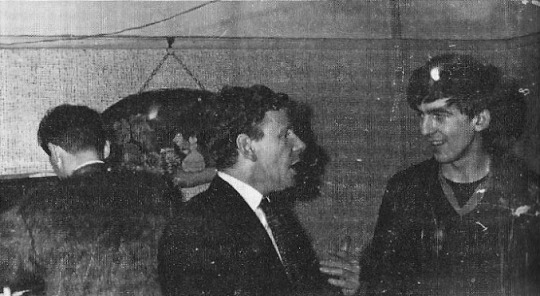

"Later in the evening, Joan had a headache and said she was going upstairs for a lie down. I went to fetch a couple of aspirins from the kitchen and said I'd follow her. Bob Wooler then made a typically cheap remark about pre-marital sex. Before I had a chance to sort him out, Paul and George grabbed him and made him personally apologise to Joan." Sam Leach, The Rocking City

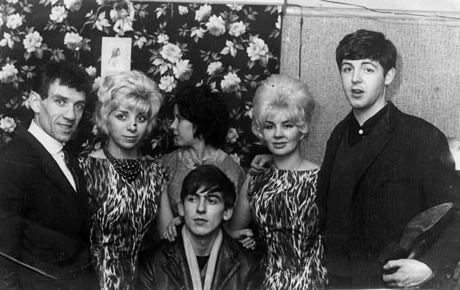
"Rory Storm was lying on the floor hopelessly drunk. He shouted up to Paul, 'I wanna be in the picture'. So, as you can see, Paul bent down and lifted his foot into the shot." Sam Leach

"The night rolled on and I found Lennon, completely sloshed, sitting in the kitchen rolling raw eggs down Ann Barton's birds-nest hairstyle. Each time one broke, he gave a gasp of astonishment at the gooey yellow mess spreading across the tiled floor. Dolly found out and gave him a severe rollicking, which sobered him up enough to utter a sincere, 'Sorry, Mrs Mac'. Everyone liked and respected Dolly McEvoy and that was the only time I ever saw Lennon genuinely humbled. He disappeared for a while after that and was found later fast asleep in the bath.
When he finally came downstairs, he once again started to apologise. Dolly had forgotten all about it, but he was still apologising as he left at nine the next morning. As we stood outside, he shook my hand gravely. 'That was the very best party I've ever been to . . . honest,' he croaked. I was pleased everyone had enjoyed themselves, but when John started thanking me for a third time, I put him in a taxi and packed him off home. As he left, I slipped an egg into his pocket. He never did tell me how that hatched out." Sam Leach, The Rocking City
#Paul McCartney#George Harrison#John Lennon#Pete Best#Sam Leach#photos by Sam Leach#quotes#Rory Storm#Joan McEvoy#Brian Epstein#Mike McCartney#Dot Rhone#Bob Wooler#Vera Brown#Ted Taylor#The Hurricanes#Paul#John#George#Brian
110 notes
·
View notes
Text
i need to get back to world building for creeped. the little thing i just wrote about toby shaking the farmers hand is abt to make me cry. i need to make a whole ass map of the city leading to the farm leading to the forest. i wanna make layouts of their cabins, ninas apartment, janes house with mary. i wanna draw the different mf cars they drive. pickup truck tim forever........ brian driving around a beat up busted 2k toyota for like 5 years and finally getting a new car and giving his old fucked up one to toby cuz theres no way he's gonna be able to sell that piece of shit..... jane getting a nice new sleek black suv that resembles the car her dad drove her to school in when she was a little girl.... putting in cute little decorations in her car.... natalie and nina going to random garage sales and buying bikes together.... natalie teaching nina simple little things about fixing the brakes and chains on a bike cuz she rode them everywhere as a kid... man....
53 notes
·
View notes
Text
Roger, teaching Freddie to drive: Okay, you're driving and John and Brian walk into the road. Quick, what do you hit?
Freddie: Oh, definitely Brian. I could never hurt John.
Roger, massaging his temples: The brakes. You hit the brakes
#queen band#queen#70s#80s#incorrect quotes#roger taylor#brian may#queen band roger#roger meddows taylor#roger queen#sir dr brian may#sir brian harold may#brian harold may#dr brian may#sir brian may#brian#bri#john#john richard deacon#john deacon#deacy#queen freddie#freddie#freddie mercury#fred#farrokh bulsara#queen memes#queen incorrect quotes
60 notes
·
View notes
Text
Secret life of the Beatles and the man who got them groupies and pot
Mal Evans was the Beatles’ fixer, roadie and confidant, but little is known about the man the Fab Four adored. Now a new book reveals all
For eight years, Malcolm “Mal” Evans was, in his way, as fundamental to the Beatles as Brian Epstein and George Martin. He was their long-time roadie and personal assistant, sometime lyricist, occasional performer and regular fixer at the height of the group’s fame and beyond.
Over the years he became friend and confidant — attending their weddings, fending off fans, procuring groupies, accompanying them on holiday, joining them on acid trips, going to India on their infamous pilgrimage to see the Maharishi Mahesh Yogi. But Mal’s dedication to the “boys” and his own desire for stardom took its toll, leading to the end of his marriage and his untimely death in January 1976.
Until now, Mal’s life remained shrouded in mystery. Drawing on hundreds of exclusive interviews and with full access to unpublished archives — including his personal diaries, manuscripts and memorabilia which for 12 years were forgotten in the basement of an American publishing house — this is the first complete portrait of a complicated figure at the heart of the Beatles’ story. Just when you thought there was nothing new to know about the Fab Four, here comes the extraordinary tale of one ordinary man right in the middle of it all.
AT 27, MAL HAD FIVE YEARS on John Lennon and Ringo Starr and even more on Paul McCartney, who had turned 20 in June 1961, and George Harrison, still a teenager at 19. Mal – was the odd man out in more ways than one. He held a real job, as a telecommunications engineer for the General Post Office, and he had a home and a family. With his wife, Lily, he lived in Liverpool’s Allerton district, where they were raising their 15-month-old son, Gary.
It was a simple twist of fate that landed Mal behind the wheel of the band’s Ford Thames van on a January day in 1962. Neil Aspinall, the Beatles’ road manager, had fallen ill with flu. He was hardly the only person felled during that severe winter. During the last week of December, a blizzard swept across England and Wales, leaving snow drifts of up to 20ft in its wake.
By the time Mal and the Beatles began the long drive to London, around midday on Monday, January 21, the van’s brakes had begun to slip. During the early leg of their journey, brakes didn’t really matter. But it was on the journey home that disaster struck in the middle of the night. As Mal drove along a quiet rural road, the windscreen “cracked with a terrible bang”, as he’d write later in his Post Office Engineering Union diary. With the windscreen splintered, Paul observed as Mal “put his hat backwards on his hand, punched the windscreen out completely and drove on”.
Mal was left to contend with the gale-force winds now pummelling the van’s interior. The bandmates gathered up stray caps and scarves and wrapped them about their beleaguered driver, who had pulled a paper bag over his head to battle the cold. “It was perishing,” John later recalled. “Mal had this paper bag over his head with just a big split in it for his eyes. He looked like a bank robber.” Meanwhile, John, Paul, George and Ringo huddled together in the rear of the van, sharing a bottle of whisky while stacked one atop the other to generate much needed warmth. “And when the one on the top got so cold it was like hypothermia was setting in,” Ringo recalled, “it was his turn to get on the bottom, and we’d warm each other up that way, and keep swigging the whisky.” It was, in Paul’s words, “a Beatle sandwich”.
All the while, Mal and the boys maintained a steady banter to stave off exhaustion. As the Big Freeze raged — swirling both inside and outside the van — the Beatles regularly pestered their driver about how much further they had to go. “[Two hundred] miles to go!” Mal would reply, referencing the approximate distance between Liverpool and London. In the years to come, “It became our own private joke, and ‘200 miles to go, Mal’ was heard whenever things were tough.”
DURING HIS YEARS WITH THE BAND, Mal discovered that the best way to avoid being ribbed by the boys was to be ready for virtually anything. To this end, he carried around with him an ever growing doctor’s bag to meet the Beatles’ every possible whim. It was swollen with musical instrument paraphernalia — plectrums, guitar strings and the like — along with household items such as aspirin, chewing gum, a torch, crisps, biscuits, tissues and cigarettes, of course. As the years went by, he had another piece of luggage, which he lovingly called his “dope bag”: a brown suede bag with an om sign prominently displayed, complete with freshly rolled joints.
This began after Bob Dylan dropped by their hotel in New York in 1964 during their first tour of North America. Not long after Dylan’s arrival, the Beatles offered their guest a sample from their motley collection of pills — Drinamyls and Preludin (both uppers), mostly. But Dylan wasn’t having it, instead suggesting “something a little more organic”. At first, Brian Epstein demurred, sensing the Beatles’ apprehension.
That’s when Dylan said, “But what about your song — the one about getting high?” At that, he began singing the middle eight from I Want to Hold Your Hand: “And when I touch you, I get high, I get high.”
John quickly interjected: “Those aren’t the words. It’s ‘I can’t hide, I can’t hide’.”
Ringo tried Dylan’s marijuana first. A few puffs from Dylan’s joint left him smiling and suddenly marvelling at the way the ceiling seemed to float down onto him. Soon, they were all stoned. George recalled that, “We were just legless, aching from laughter.” And for Paul especially, the Beatles’ first brush with the devil weed seemed not only mind-blowing, but a moment of great import. To him, it felt exactly like the kind of experience that should be captured for posterity. Having dutifully provided his roadie with a pencil and paper, Paul ordered him to, “Get it down, Mal, get it down!” Despite being quite stoned in his own right, Mal managed to record the Beatle’s most insightful thoughts. The next morning, Mal retrieved the musings, which boiled down to a single sentence: “There are seven levels,” his notes read. Roadie? Bodyguard? Fixer? Now Mal could add “amanuensis” to his evolving portfolio.
AS EARLY AS 1963, it was clear that there was an unusual zeal among Beatles fans, one unbounded by the conventional social behaviours of the day. “As if attacked by a virus that changed their moral standards, teenage girls wanted sex with the Beatles and they didn’t care how they got it,” wrote Tony Bramwell, Brian Epstein’s assistant. “When they tried to grab a live one, crawl through windows or hide in wardrobes, they were sorted out by Mal and Neil Aspinall like M&Ms, to be sampled and tasted first. Brian — who was puritanical where his protégés were concerned — would have had a fit had he only known, but he was kept totally in the dark.”
At its height, the stage and its environs would take on the look of a battle zone. “Unconscious teenagers were being dragged out of the audience,” Mal wrote, describing a gig in San Francisco in 1965, “and we hauled them on to the stage for safety. Some were in a terrible state, bruised, battered, cut and unconscious. Their clothing was torn and their hair dishevelled. We put them backstage, where the casualties mounted into the hundreds as the show went on. A chain of policemen organised to get them to the first aid centre.” At one critical juncture, a fan hurled a metal folding chair onstage. Eventually, the situation became simply too dangerous for the band to continue. “It’s no good,” Brian was told. “You’ll have to cut the show. Only one more song.”
As the casualties mounted, Mal prepared to usher the Beatles to safety. “Sobbing girls lay slumped against the walls or huddled in the corners,” he wrote, “and I caught a glimpse of Joan Baez trying to revive some of them with smelling salts. Every artist in the show was backstage helping out and trying to get the fainting youngsters back on their feet.”
When the concert mercifully ended, the Beatles dropped their instruments, ran from the stage and climbed into an enclosed freight truck to make their escape. Afterwards, “Pandemonium broke out in the auditorium,” Mal wrote, “and I thought the whole place was going to collapse around us. But somehow, the police managed to keep the tide at bay, all the exit doors were thrown open and people were hustled out. The scene behind them was of devastation, with seats overturned, people still trying to get onto the stage and more people fainting.”
By the next morning, the Beatles and their entourage were winging their way back to London. But the perils of the band’s second North American tour would not be so quickly forgotten. For his part, Brian Epstein would chalk up the chaos and violence to lax security. But it was more than that, Mal realised. He had long felt that there was a dark side to Beatlemania, that not all the attendant hysteria could be understood as the simple byproduct of fandom.
Meanwhile, as the tours mounted up, for Mal the sudden availability of sex, seemingly free from consequences, represented an irresistible bonanza. After a lifetime of self-doubt over body issues and inveterate shyness, he simply couldn’t control himself.
“Big Mal was a demon for sex,” Tony wrote. “His stamina would have been remarkable in a harem. In the flat, sooty back streets of Birmingham or Manchester, he was a stud straight from the Kama Sutra. Like sacrificial virgins, a lot of the girls willingly accepted that they would have to do it with Mal to get to John, Paul, George or Ringo, and Mal knew it.”
Years later, John would liken the Beatles tours to Fellini’s Satyricon, suggesting that their worldbeating jaunts were a fantasia of sexual decadence. Lloyd Ravenscroft, the Australian tour manager, confirmed that the band members “had girls in their room, yes. That was in the hands of Mal Evans, who was very good at picking the right girls. It was very discreet and well organised.”
Mal became “a suave and smooth procurer”, in the words of Larry Kane, a broadcast journalist who was embedded with the band on one of their US tours, “able to spot a target with incredible intuition. It was as though he could pick up on the scent of women who were willing. Only rarely did I see him alone in a hotel corridor. At least his flair for recruiting included an understanding of the difficulties the Beatles could face if any female companion was underage or wronged in any way. If one could get an Oscar for safely procuring women, Mal Evans would have received the lifetime achievement award.”
Back home, Mal’s reunions with Lil and Gary were tempered by the infrequency of his correspondence and by the odd scraps of paper his wife had discovered in his suitcase — addresses and telephone numbers, invariably written in a feminine hand, from the “pen pals” he would meet on the road. Mal brushed off their significance, but Lil knew better. “It used to break my heart,” she recalled.
By 1968 — a year in which he had tried in vain to remake himself as a record executive — Lily’s mistrust of her husband had reached a fever pitch. By this point, she wasn’t just finding “silly groupie letters” in his suitcase, but also the occasional stray pair of knickers and other telltale signs of infidelity. She recognised that Mal was being seduced by overwhelming forces, impulses with which she could hardly begin to compete. “One minute he would be in Hollywood,” she said. “The next day he’d be back here cleaning out the rabbit hutch.”
Mal had emerged as a celebrity in his own right, thanks to publications such as The Beatles Book. “It was OK for him,” Neil Aspinall recalled, “going out in front getting the instruments ready. Dead popular he was. As they cheered and shouted at him he talked to them and made jokes. He didn’t have to physically fight them off, once it started.”
All shook up: the Fab Four meet Elvis
ON THE NIGHT OF AUGUST 27, 1965, Mal and the boys met Elvis Presley at the King’s Bel Air mansion. The 30-year-old superstar was in town to shoot the film Paradise, Hawaiian Style.
Prior to his coveted meeting with the King, Mal spent time with Colonel Tom Parker at his Paramount Studios office, where the roadie was lavished with gifts, including a gold-plated cigarette lighter and, to his glee, a white bathrobe emblazoned with “Girls! Girls! Girls!”. Mal not only appreciated Parker’s generosity, but recognised that he possessed “one of the most astute showbiz brains in America”, adding that, “He has wrung every dollar he can out of the Elvis situation — and who can blame him?”
As Mal was lounging in the Colonel’s office that day, the telephone rang. “That was a news agency, Mal,” Parker said. “It looks as though word has got out about Elvis and the boys meeting tonight. There’s a story in the London Daily Mirror. Now Reuters wants confirmation.” At that moment, Mal’s heart froze. “For a moment, I thought Parker was going to call the whole thing off.”
But the Colonel wasn’t to be deterred. With the so-called Memphis Mafia — a group of Presley friends and employees who served and protected the King — at his beck and call, Elvis’s manager instigated a complex system by which they changed vehicles several times before arriving at Benedict Canyon. As the Colonel looked on, Mal, Neil Aspinall, the Beatles’ press agent Tony Barrow and the Beatles ducked into a black limo. “For once,” Mal later quipped, “John, George, Paul and Ringo were ready to leave on time, and they climbed into the waiting cars at the bungalow bang on the dot.” Shouting, “Roll ’em!” out of his car window, the Colonel’s vehicle snaked its way through Hollywood, the convoy followed by a police motorcycle unit. By 10pm, the motorcade had arrived at Elvis’s house at Perugia Way. Incredibly, the Colonel’s plan had worked.
Mal was beside himself, feeling a combination of reverence and utter shock. After being served a large Scotch and Coke by one of the King’s minions, Paul beckoned Mal to meet his idol in the flesh. “Presley turned, and we shook hands. ‘This is your number-one fan, El,’ said Paul. ‘And he’s with us.’” Mal was thunderstruck by the sound of the King’s “strangely quiet voice” as he said, “Sure pleased to meet you,” to the roadie.
As the evening progressed, Mal marvelled at Elvis’s luxurious home, with its well-stocked cocktail bar and lounge, its thickly carpeted rooms, and, in the den, a massive fireplace with a copper chimney disappearing into the ceiling at the centre of the room. “Pretty soon the record player was working full blast,” Mal wrote. “Elvis played a whole lot of albums, many of them the Beatles, but modestly, perhaps, did not play any of his own. The noise was terrific, the drinks were flowing, the talk was animated, and, as I say, it was just like being at home with the lads from Liverpool.”
Eventually, Elvis picked up a bass guitar that was plugged into an amp positioned near the television set. “He began to strum away on the thing, playing quite ably, but he insisted that he was only learning,” Mal wrote. “Keep practising, fella. You’ll get to the top yet,” Paul quipped. As Mal looked on, “the most fantastic impromptu unrecorded session of all time” ensued when “El found some guitars for John, George and Paul and a set of bongo drums for Ringo, and they began to make the place rock with an hour of improvised beat music. It was fabulous.”
“There was only one hitch during the little concert the boys put on,” Mal later reflected. Nobody had a plectrum. “Mal’s got a pick,” said Paul. “He’s always got picks. He carries them on holidays with him.” Crestfallen that he had neglected to bring his well-travelled doctor’s bag, along with its ready supply of guitar picks, Mal scurried to the kitchen, where he fashioned pieces of plastic cutlery into makeshift plectrums.
Ringo and Mal tried their hand at pool, losing four straight games to members of the Memphis Mafia, while, “John lost $9 at roulette with Colonel Parker and Brian Epstein, who had joined us on getting back from New York.” In one of Mal’s favourite memories of that night, John pretended to be a reporter.
“Once, when I was talking to El, sitting on a settee, John came screaming up to us and jabbed an imaginary microphone under El’s nose and began to fire off a string of meaningless questions — which I must say were a pretty accurate take-off of some of the daft things that interviewers ask at our own press conferences. ‘What are you going to do when the bubble bursts, Elvis?’ he asked. ‘What toothpaste do you use? What time do you go to bed? Do you like girls? Who’s your favourite artist?’ ‘Yeah, yeah,’ chuckled El. ‘I’ve heard ’em all before.’”
Escaping from guns and a mob in Manila
ON THE MORNING OF JULY 3, 1966, the Beatles and their entourage left for the Philippines by way of Hong Kong. “Manila was our next port of call on our way back to England,” Mal later remembered, “and it was here, for the first time in my life, I was to experience real fear.” As it turned out, things were cockeyed from the outset. After attending their usual post-arrival press conference, John, Paul, George and Ringo were hustled out of a rear entrance and taken to the harbour, where they were ushered aboard a motor yacht.
“It was really humid, it was Mosquito City,” George reported, “and we were all sweating and frightened. For the first time ever in our Beatle existence, we were cut off from Neil, Mal and Brian Epstein. There was not one of them around, and not only that, but we had a whole row of cops with guns lining the deck around this cabin that we were in on the boat. We were really gloomy, very brought down by the whole thing.”
Things would get worse. After Brian succeeded in securing the Beatles’ return to the mainland, they ensconced themselves in the opulent Manila Hotel for the night. What the members of the band’s entourage didn’t know was that the Beatles had received an invitation from Philippine president Ferdinand Marcos and First Lady Imelda Marcos requesting their appearance at Malacanang Palace at 11 o’clock the next morning. Only, Brian and the Beatles never laid eyes on it. After an incident in America, at the British embassy in Washington, in February 1964, when the band felt they had been snubbed by upper class, titled guests, official requests for the Beatles’ presence were routinely ignored. Instead, the group went about their business in Manila, performing the first of two shows for 35,000 spectators at José Rizal Memorial Stadium and another audience of 50,000 later that same day.
For the moment, the band and their entourage hadn’t felt any blowback from having snubbed the First Lady, save for scathing news reports on Filipino TV. That night, the promoter arranged for a lavish party at the hotel, with numerous prostitutes on hand to cater to the boys’ needs. On the morning of July 5, Mal began to sense trouble when a pistolpacking member of the promoter’s staff requested autographed pictures of the Beatles. “I was in the middle of explaining that I had given away most of the photographs,” Mal wrote, “keeping a few for the plane crew on the way home, when I was cut short by the same gentleman brandishing a gun in my face and repeating the demand. I couldn’t give them to him fast enough. This was the prelude to a morning of terror.”
Mal could feel the tension rising as he sought out a truck to transport the luggage and gear to the airport. “The feeling in the air was that nobody wanted to be associated with us,” he wrote. “On arriving at the airport, I was informed by the police on duty that I couldn’t park near the airline gate, but in the normal parking area like ordinary people. Their attitude being, ‘Who do you think you are?’” When the band and their entourage arrived at the airport, Mal discovered that no one would help them, save for the KLM airline attendants, who processed their baggage.
Everything went to hell when they began making their way to the international lounge, only to be intercepted by a dozen Filipinos. “It was obvious that they were looking to cause trouble, and quite prepared to beat the hell out of us, because of the fiasco the previous evening with the First Lady,” Mal wrote. “They were standing on our toes, jabbing us with elbows, generally giving us a bad time, and the last thing we could do was hit back. Up to that point, they were just a nuisance and making us feel very uncomfortable. I would give my right arm for any of those boys, but under these circumstances, it was most inadvisable to retaliate in any way whatsoever.”
It was chauffeur Alf Bicknell who could no longer contain himself. Daring to strike back at the assailants, he was viciously attacked, ending up flat on the airport floor with a pair of cracked ribs. Despite his large size, Mal sustained numerous blows, as did Ringo, who was knocked down with a swift uppercut and crawled away as assailants kicked him. Things seemed to get worse as the group approached customs, where John and George were punched and kicked. Paul managed to avoid the brunt of the violence by sprinting ahead. Along with Alf, Brian suffered the most, sustaining a sprained ankle during the mêlée. At one point, Mal realised he was bleeding from his leg.
Mal would never forget the surrealness of walking across the tarmac after the violence they had experienced in the terminal. The ruffians were still in evidence, hurling insults and epithets as the Brits made their way to the waiting KLM plane. But the fans were there too, shouting, “We love you, Beatles!” and tossing bouquets of flowers at their feet.
Once on board the plane, Mal wrote, “We all gave a sigh of relief, thinking we were safe on neutral territory. We were all shaking, beads of fear running down our faces.” That’s when immigration officials boarded the plane, demanding that Mal and Tony Bramwell follow them back to the terminal.
In the immigration office, they found themselves once again at the whimsy of the mob, being jostled, pushed and shoved as officials demanded they fill out new immigration forms. As TV crews recorded their every move, the two struggled to complete the forms, their hands visibly shaking in terror. And then, just like that, they were being led back to the plane, once again experiencing a strange gauntlet of violence and insults on the one hand and the goodwill of the assembled Beatles fans on the other. After some 40 intense minutes away from their friends, Mal and Tony were back in their seats. “The last words we heard before the doors closed were, ‘We love you, Beatles,’” Mal wrote.
Mal Evans died on January 4, 1976. He was shot by the police in a California apartment as he brandished a rifle, having taken a suspected Valium overdose. His diaries and memorabilia lay on the floor next to him.
Extracted from Living the Beatles Legend by Kenneth Womack (Mudlark, £25), published on November 14.
(source)
28 notes
·
View notes
Text
⚠️2/10(WIP)⚠️
Two brake vans (they are cousins in my human au) I’m calling them the double b’s but it’s Bruno and Brian!!
Short context is Brain worked in the Wellsworth and Suddery Railway and Bruno tends to stay at Vicarstown Yards cause it’s more quiet (I got it from Jasperpie on Twitter and DA) but has been known to travel with others to other parts of the island especially the Estate Railway for similar reasons.
Brian is very protective of his little cousin.
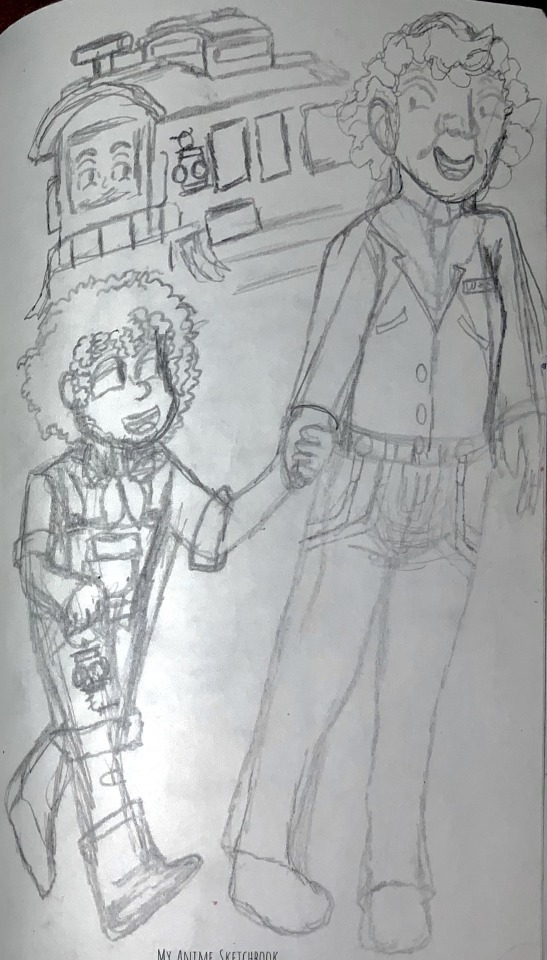
Currently drawing ✍️:
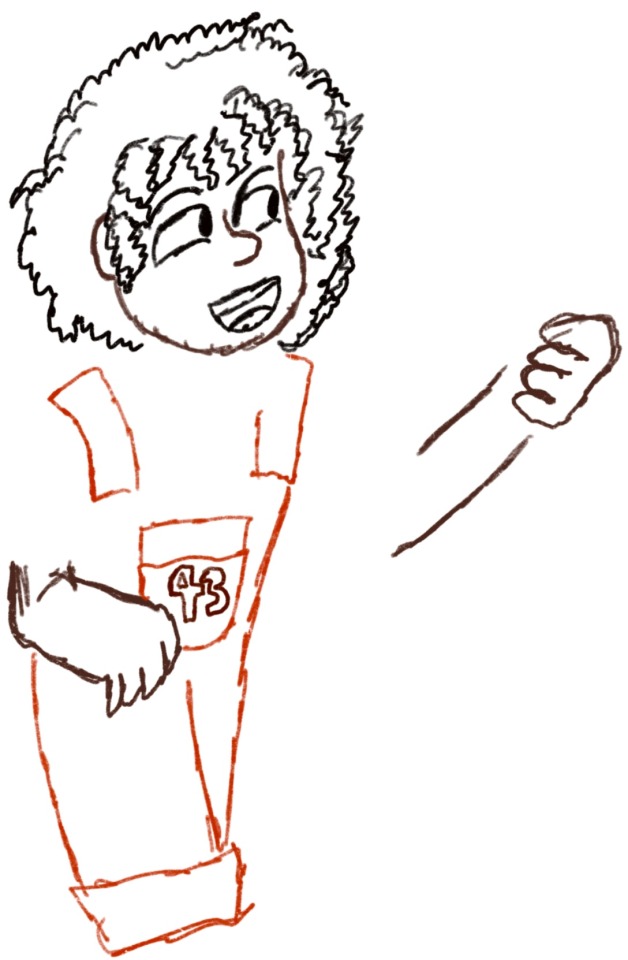
(yeah Bruno looks too much like Antonio and Ezran 😆)
Brian belongs to Wildnorwester
#ttte#ttte bruno#bruno the brake car#ttte brian#humanization#ttte humanized#my art#my art style#my art stuff#my art owo#my art lmao#my wips#current wips#wips#i mean tbh Brian has plenty of reason to be protective of Bruno#mainly the whole being serepated from your current so fair only surviving family member#who was still a pre/early teen you’ll freak out understandbly
5 notes
·
View notes
Note
Okay so I just discovered a TV show with Brian Van Holt and his character immediately made me think of DILF Bo 😩
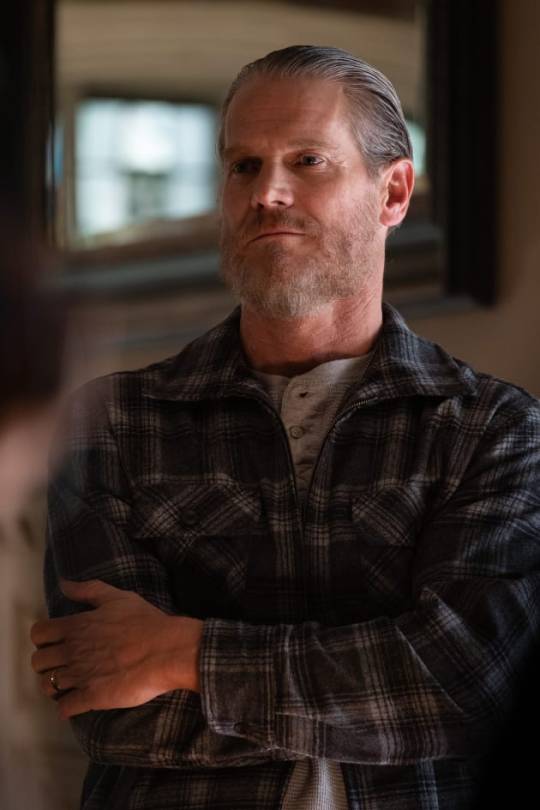

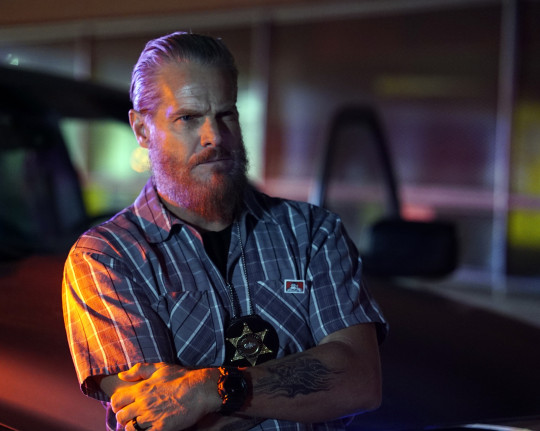
The show is called Deputy if you were curious 👀
YES there he is that's our man!!
actual footage of him watching us interact with another living human that isn't him he's so jealous about it crossing his arms and sulking
I myself am v partial to this pic of him in Den of Thieves like goddamn catch me cutting my own brake lines so he has to come save me

112 notes
·
View notes
Text

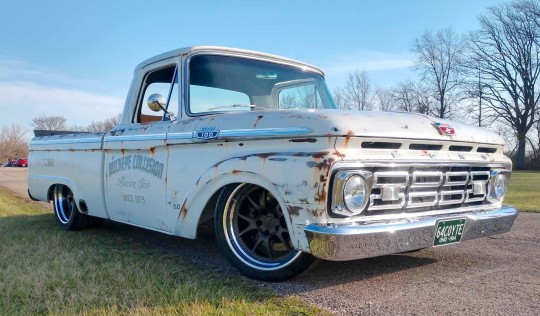

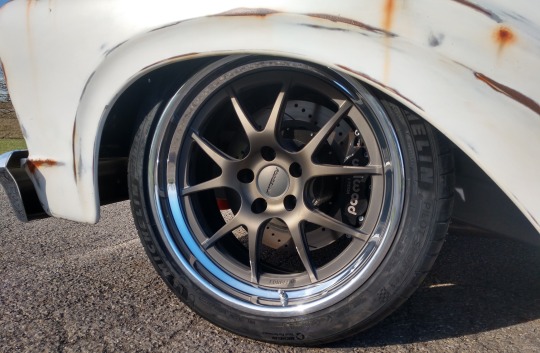
Greetings from rural Ohio. Brian Reed’s pro-touring 1964 Ford F100 truck was built by Marion, Ohio’s Buckeye Collision. It’s powered by a Ford Performance Gen II 5.0L Coyote V8 mated to a 6R80 automatic transmission and rides on a custom chassis with 4-link rear suspension, Wilwood disc brakes, 275/35ZR19 & 345/30ZR20 Michelin Pilot Sport 4S tires, and 19x9.5/20x12 Forgeline forged three piece GA3 wheels finished with Matte Bronze centers & Polished outers! See more at: https://www.forgeline.com/customer-gallery-brian-reed/cgk2703
🇺🇸🇺🇸🇺🇸
#forgeline#forgelinewheels#forgedwheels#customwheels#GA3#ForgelineGA3#notjustanotherprettywheel#doyourhomework#madeinUSA#BuckeyeCollision#Ford#F100#64F100#truck#protouring#patina
10 notes
·
View notes
